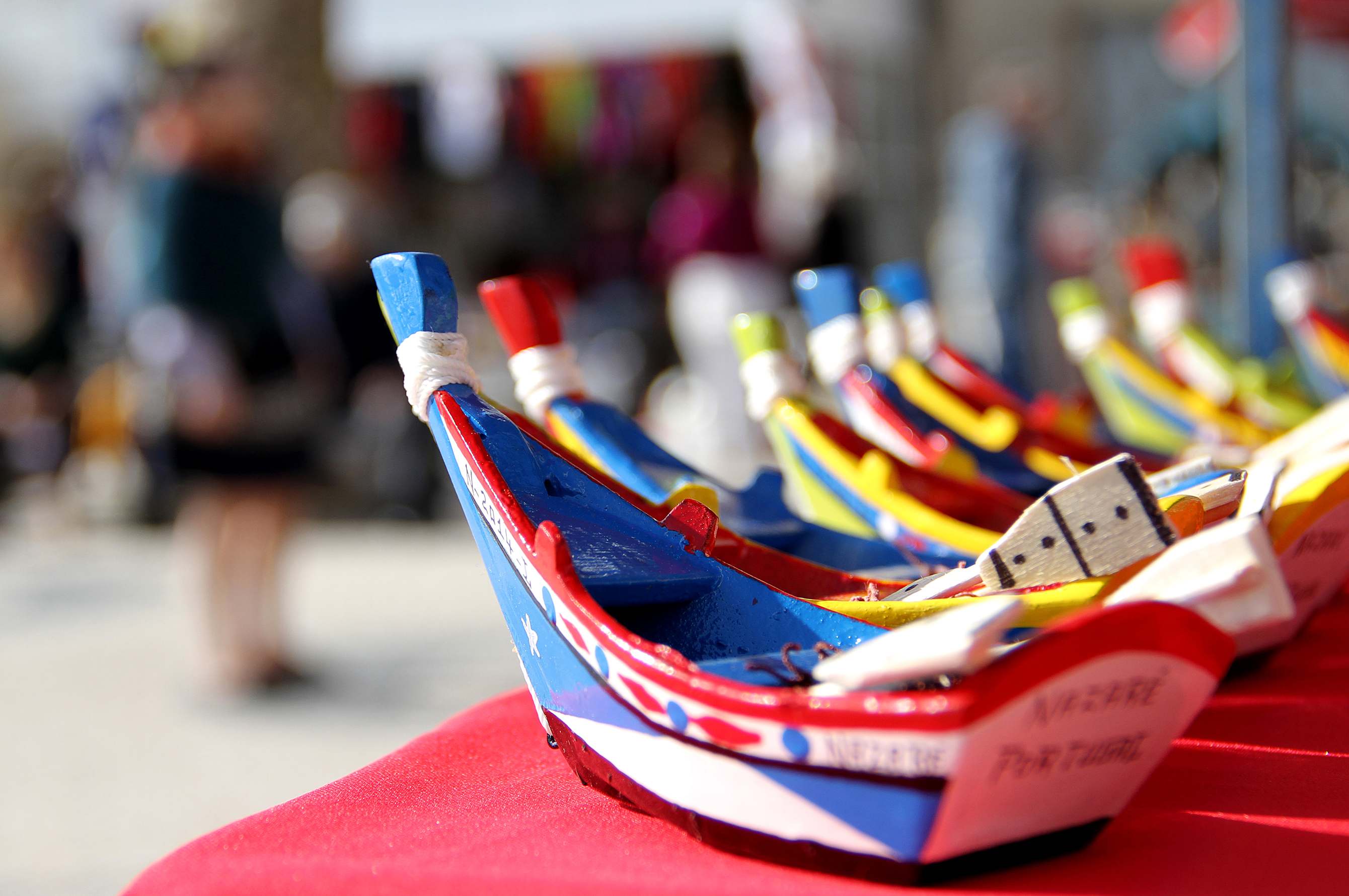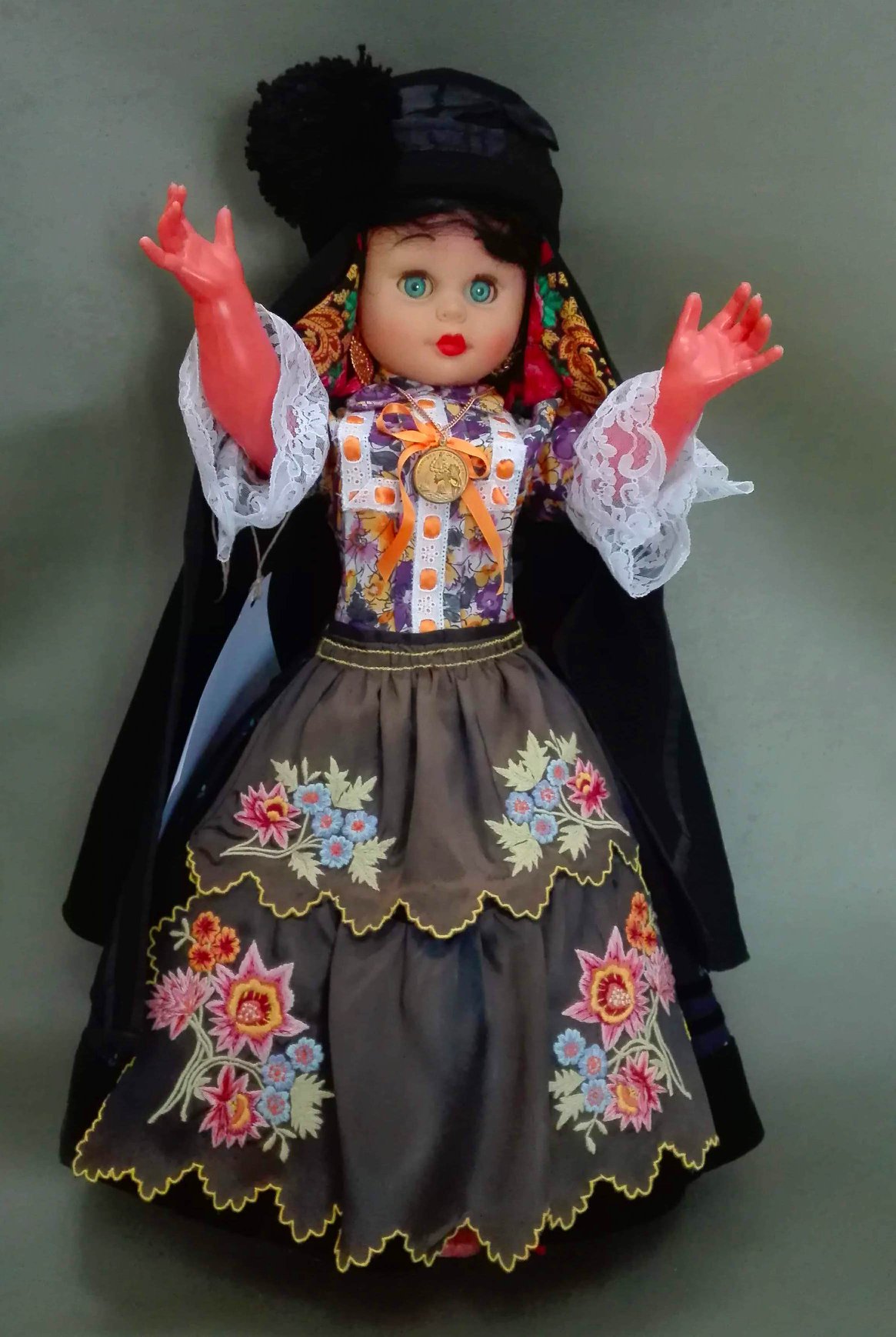
- prev
- next
Description
The traditional cuisine of Nazaré is characterized by fish and shellfish dishes of several species and preparation manners.
The “Caldeirada” (fish stew), the grilled fresh fish (sardines, horse mackerels, golden-breams and rock basses, etc.), the “Massa de Peixe” (sort of fish soup with small noodles) with rock bass or seabream, are the most emblematic specialities.
The gastronomic offer also includes dishes like “Arroz de Marisco” (shellfish rice), “Açorda de Marisco” (shellfish bread panada), “Arroz de Tamboril” (monkfish rice) and Cataplanas (with fish or/and shellfish), among others; shellfish like cockles, clams, shrimps and spider crabs are part of the specialities. All of these delicacies can and should be enjoyed in one of the many restaurants in the village.
Difficult to find in restaurants, but much appreciated and known to everyone is sun-dried fish: horse-mackerel and sardines, octopus and dogfish, among others – half-dried (enjoados) or dried; it can be purchased for consumption at home, on the Marginal, in front of the Cultural Centre, in the "Drying Ground"(Estendal), part of the Sun-dried Fish Museum – Living Museum.
Támares, Sardines (sweets) and Nazarenos are the most important sweet pastries that can be tasted in the many confectioners and pastry-shops of Nazaré.
Image Gallery
Description
Not very well known is the origin of this traditional way of sun-drying the fish as the best method to preserve and conserve the fish in excess to keep it to days of shortage. This technique also allowed the fishwives to maintain their families and have fish to sell in the region’s markets.
The most used species were, and still are, horse-mackerel (of different sizes), mackerel, sardines (big and small), dogfish, due to their abundance, but also octopus and ray. Although, nowadays you can find the most varied species of fish.
In Nazaré we can find two different types of sun-dried fish: the dried and the half-dried, with diverse forms of preparation and of eating.
First the fish is gutted (emptied of its guts), and then it’s washed and passed by salted water (before was used sea water). Finally, it is opened and it’s placed onto the “Paneiros” for sun drying. This process takes about 2 to 3 days, according to the atmosphere conditions and to the sun. This kind of sun-dried fish can be eaten raw (shredded), but usually it is boiled with potatoes and served with olive oil, lemon or vinegar or some minced garlic. The species most used to be sun-dry are the horse-mackerel, the mackerel and the dogfish.
The half-dried fish is prepared the same way, but it spends just one day at the sun, so it stays just half-dried or withered. The most used specie for this preparation is the medium size horse-mackerel. It is habitually grilled, served with boiled potatoes, olive oil, lemon or vinegar, or even with a sauce made of onions.
The octopus is most appreciated boiled, in rice or salad, but it also eaten uncooked. Sardines are a fat fish, so are usually eaten grilled, accompanied with boiled potatoes and a green salad.
Each type of fish has a different way of being sun-dried: horse-mackerel, mackerel and dogfish are usually opened; sardines are dried as a whole (without head, scales and guts) as well as the octopus and the ray.
The “paneiros” are big wood rectangles frames where fishing net is laid on, and where the fish is exposed to dry, in a way that the air circles around it.
It’s at the south part of Nazaré’s beach, near the Cultural Centre (where was the fish auction between 1961 and 1986), that we find the “Estendal” (drying ground). Here we can see the fishwives drying and selling the fish directly to local people and visitors. This is the ideal meeting point for consumers and fish sellers, for this gastronomic speciality is hardly found in the village’s restaurants.
Enjoy and visit the Sun-dried Fish Museum – Living Museum.
Taste it! Good appetite!
Image Gallery
Description
The local handicrafts express the relation between the town and the ocean, being the typical dolls and the miniature boats the most relevant pieces of manual work.
Small boats, in wood or ceramic, reproduce, sometimes to the scale, the boats that once were this town’s life. Little dolls traditionally dressed with the working or festive costume and mini fishermen with stocking-cap and tartan trousers are a delight to everyone.
Fishing nets of several sizes, shapes and uses – ornamental and/or utilitarian – are part of the crafts of the fishermen.
Being a town of artists and skilful artisans, here is possible to find oil canvas painting and watercolours depicting coastal life and seascapes, as well as sailor’s arts (mariner’s knots).
In the municipality, in the village of Valado dos Frades, the decorative arts linked to ceramics, porcelain and faience (with decorative and utilitarian pieces - some hand-painted) stand out. In Famalicão, it is wickerwork, made from wicker and common club-rush, which we can admire.
Image Gallery
Description
Cultural reference of a people and of its behaviour and personality, in Nazaré the costume reflects the sea and the fishing life experiences. Functional and practical or harmonious and elaborate, the costume reveals their personality. Adapted throughout the years, not only to the needs of life and to the sea labour, but also to the fashion tendencies (skirts’ length, fabrics and patterns, especially the feminine costume) it is still used on daily life, mainly by the elder women, and it is far from being a piece of museum.
The fishermen costume was adapted to the conditions of the sea, offering freedom of movements, being simultaneously light and warm. The men wore tartan shirts and tartan trousers with a black band wrapped around the waist and a black wool stocking-cap. Neither the trousers nor the shirts had pockets and the personal objects were kept inside the stocking-cap. Usually the fishermen walked barefooted. In the maelstrom of time, men's clothing is no longer used, and it is only in the Carnival period that the typical fisherman tartan shirts can be seen again.
Either for working or for festivity days, the traditional costume reflects the woman’s personality, but it is also adapted to her daily work - preparation, selling and drying of the fish. Thus, being practical, functional and protector against the cold and the sea breeze, allowing, at the same time, free movements but keeping the women always covered and “decent”. Working women wore several petticoats: first a white one, above this 2 or 3 colourful flannel petticoats, a pocket, one cashmere or terylene petticoat, above all a dark-colour apron with pockets, a simple blouse, headscarf, shawl and mules.
However, it was during the feast days that the Nazarene woman showed all her elegance as well as the richness of her family; wearing white under petticoat, above this, several colourful petticoats (the famous 7 full petticoats), covered by a satin apron artistically embroidered, a flowery blouse with lace sleeves, headscarf, black cape, varnish mules, and a gold chain and earrings.
Image Gallery
Description
People usually say that the seven skirts are the representation of the seven colours of the rainbow; the seven days of the week or the seven waves of the sea, but in reality no one knows for sure the origin of the use of seven skirts by the women, though there are several explanations always related with the numerous biblical, mystic and magic attributions of the number seven.
Probably the most beautiful one is the version where women used the skirts to count the waves, because they knew that after 7 big waves there’s a flat period that would allow the boat to come to shore safely; they counted the skirts like a rosary, praying.
The use of several skirts concerns their way of life, because in the past most women used to spend long periods of time on the beach waiting for their husbands or sons to return from the sea (others waiting for the fishing nets to be unload to go prepare and sell the fish); and they needed to be protected not only from the cold and the wind, but also from the “eyes” of the strangers. So they used some of the skirts to cover the head and the shoulders and the others to cover the legs, so to be “decent”.
The harmony of the female silhouette is another reason for the use of the 7 (or more) skirts, because in this way women were more attractive and elegant - thin waist and rounded hips, being the women able to wear 7, 8, 9 or more skirts according to their own silhouette.
What is certain is that the woman adopted the use of the seven skirts on feast days and the tradition began and continues to this day. However, in the working costume, a smaller number of skirts (from 3 to 5) are usually used.
Image Gallery
Description
The originality of Nazaré’s folklore comes, mainly, from the strong and well-stressed character of the people. They dance the “vira”, an original dance from the north of Portugal that has gained here new and unique rhythmical characteristics and movements; they also dance the “corridinho” (a traditional dance from the Algarve region and transformed by the rhythm of Nazaré), but so energetically that it leaves dancers and audience breathless.
They sing and dance simultaneously, without a choir or recorded music, with joy and gracefulness. They dance barefooted, as once danced the fishermen and the women on the beach, to the sound of rudimentary instruments used in their celebrations – that having no other instruments, played with two pinecones, a glass bottle with 2 forks inside and a clay jug beaten with a fan. Later on were added the harmonium, the concertina, the accordion and the clarinet that the toccata (music players) uses.
Both words and the music reflect the strong connection between this people and sea life and fishing labour; people who living in the uncertainty of the future have the capacity of living with an open smile on their faces, challenging the difficulties of life.


















